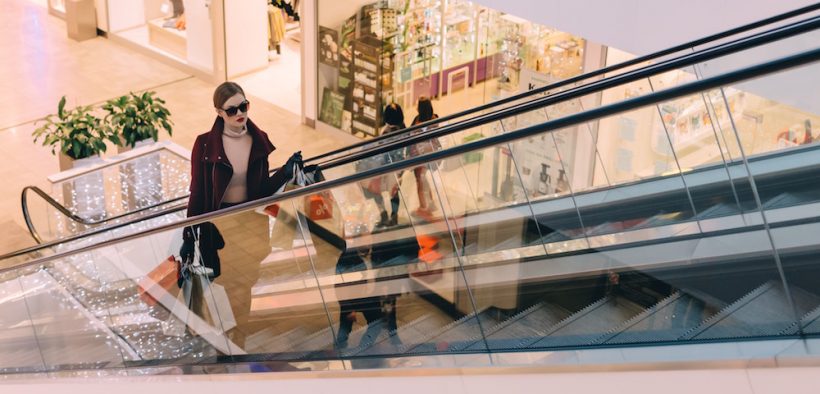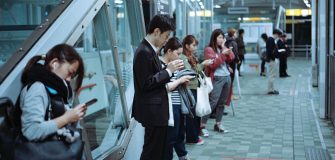Making It Work: Fashion and Beauty in Australian Retail
Share

Fashion and Beauty remain to be the top players in retail. People will always need and go for these retail segments as lifestyle essentials. A 2018 report from Australia Post states that 57% of BNPL purchases are fashion-related, while Health and Beauty account for 10% of BNPL transactions. Fashion accounts for one in three online purchases. Health and Beauty have also seen a 29.4% growth, making it another strong year for this segment.
Attracting consumers in the youth demographics is essential for retailers. Recent trends show that the younger generation accelerates growth in retail. More than half of the youth consumer demographics have a favourite website that they would recommend to others. Word-of-mouth remains to be a top marketing strategy for retailers.
Retail in Beauty
Beauty retailing has shown incredible growth over the years. IBISWorld states that the cosmetic and toiletry industry is worth $5 billion a year.
In general, the Health and Beauty segment are spread over different demographics. Younger individuals and professionals are buying beauty products. For retired Australians, they are going for health supplements.
Cosmetics and Beauty retailers are usually the fastest growing tenants in suburban and city malls. What makes the Beauty retailing a powerful force is that it is the backbone of department stores. They offer one of the most robust sales per square meter. Both operators and landlords get the best margins for beauty, cosmetic and skincare sales. Department store landlords also have an average moving turnover of about $60,000 for their cosmetic sellers.
Sephora and Mecca are leading the hype in the cosmetics industry, and this is because they allow people to experience luxury brands at a price which is affordable. Making their stores highly experiential keeps traffic coming in and influencing customers to buy more of what they offer.
South Korean retailers are also entering the Australian market, spearheaded by top brand Innisfree. More Asian brands are coming into the market, as Aussies are starting to follow global trends.
Moreover, this is not just for the women demographics. Retailers are also tapping into the male market with the onslaught of grooming and manscaping services. There’s an increasing number of grooming services and barber shops with men becoming more focused on personal appearance.
Retail in Fashion
The Fashion segment in retail may not have the same promising growth compared to Beauty, but it remains stable across different channels.
A 2016 statistics from Magenable shows that Fashion e-commerce in Australia is a $3.15 billion market. $2 billion of that is spent on domestic merchants. What makes fashion e-commerce click with Aussies are the value for money, ease and convenience, and variety of products available online.
Moreover, the younger the Australian, the more likely they are to spend in fashion.
Luxury fashion shopping for Australian retailers is also experiencing a certain surge among shoppers from China. Chinese tourists, students and those based in Australia are the main drivers of growth for luxury brands.
According to BOF McKinsey and Company’s State of Fashion 2018, a critical tipping point will be reached when more than half of the apparel and footwear sales will originate outside of Europe and North America. The primary sources of growth are emerging countries across the Asia Pacific, Latin America and other regions. Australia is also opening its doors for more international brands to come in, as it drives growth in the industry.
What Makes Fashion and Beauty Tick
It’s eternal! Fashion trends change all the time. More and more people are showing their individuality through fashion which makes each section saleable. The influence of social media triggers more consumers to get into the latest and follow their role models.
And in beauty? There will be more celebrity collaborations for makeup and skin care, more endorsements for consumers to try. The need for both industries will never go away.
Still, the retail experience that matters most, consumers are now bold.
There’s an element of feel-good and instant gratification when there’s a focus on a shopping experience and not just on products. A retail experience makes customers more likely to purchase from a store that makes shopping more worthwhile.
Consumers want an experience. Trying on beauty products, swatching and comparing items provide something experiential for customers. Virtual fitting rooms are also an upcoming development that people are looking forward to in stores. Omnichannel methods of retailers also make the in-store and online experience more seamless for customers.
If you are a consumer, how are your closets and dressers looking?
If you are a business mogul, what’s the current product trend you are launching?
Learn more about how you can innovate your business and ride the changing trends in the industry in the upcoming New Retail ‘19. Equip your business to become resilient and successful with the knowledge sharing and partnerships you’ll gain in this three-day program on Feb 2019 at MCEC Melbourne. Book your seats now or partner with us.
Don’t forget to signup for our newsletter for more insights like this (and an event discount)!
[activecampaign form=109]













Follow us on social media